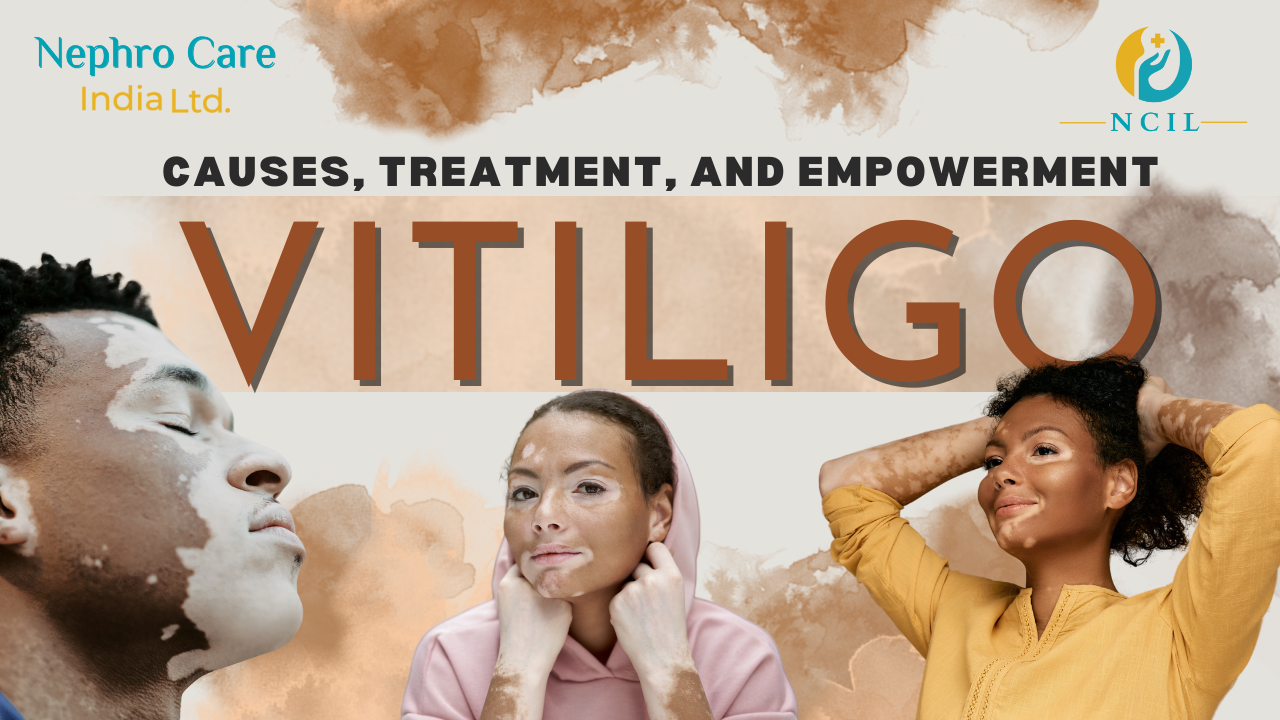
Let’s take a moment to think about Michael Jackson, the iconic King of Pop, who mesmerized the world with his music and performances. Many of us can’t help but sway to the beat of “Heal the World” and many more. But did you know, that behind the stage lights and fame, he battled a silent but visible foe: VITILIGO? Vitiligo is a skin condition that makes patches of skin lose their colour, creating white spots that stand out against the rest of the skin. It’s a common condition, but not everyone knows much about it. This skin condition affects millions worldwide. Many of the world’s famous celebrities, from Winnie Harlow to Jon Hamm, have been open about their experiences with vitiligo, bringing awareness to a condition that goes far beyond skin deep. Let’s explore vitiligo together—what it is, how it happens, if it runs in families, and what treatments are available, etc.

This is a persistent skin condition characterized by the emergence of patches or spots with diminished skin pigmentation, which can occur on any part of the body. The extent and pace of pigmentation loss differ from person to person.
There are various types of vitiligo, including:
Vitiligo can affect anyone, regardless of age. However, it often begins before the age of 20 and can even start in childhood for many individuals.

While it is not directly inherited like some genetic conditions, there is evidence to suggest a genetic predisposition. 30% of vitiligo cases are reported to be genetic. It appears to be more prevalent in those with a family background of the condition or those with specific autoimmune disorders such as:
Vitiligo usually starts on the hands, forearms, feet, and face. However, it can appear on any part of the body, including mucous membranes (like the moist linings of your mouth, nose, genital and rectal areas), as well as your eyes and inner ears.
Currently, there is no known cure for vitiligo.
Vitiligo is primarily a cosmetic concern and typically does not pose any harm to your overall health. As a result, treatment is not always necessary. However, in cases where it is extensive or has a significant impact on your emotional health, consulting with your healthcare provider can guide you towards treatment options aimed at achieving a more uniform skin tone by either restoring lost colour or removing remaining colour. Some common treatments include:
Between 10% and 20% of individuals with vitiligo can achieve complete repigmentation if the condition is diagnosed before the age of 20, primarily affects the facial area, or experiences rapid spreading within six months.
No, vitiligo is not contagious and cannot be passed from person to person through physical contact.
Living with vitiligo can present challenges beyond the physical changes to the skin. Many individuals with this problem experience psychological and emotional effects, including low self-esteem, anxiety, and depression. The visibility of the condition can also lead to social stigma and discrimination, highlighting the need for greater awareness and acceptance.
Despite the challenges, many individuals with vitiligo have embraced their unique beauty and become advocates for awareness and acceptance. Through social media, awareness campaigns, and community support groups, people with this condition are sharing their stories, challenging stereotypes, and promoting inclusivity.
In conclusion, vitiligo is more than skin deep. It’s a condition that affects individuals physically, emotionally, and socially. By understanding the complexities, supporting research for better treatments, and fostering a culture of acceptance and inclusivity, we can empower those living with vitiligo and celebrate the diversity of human beauty with the timeless words of Michael Jackson’s song, ‘Heal the world, make it a better place for you, and for me and the entire human race.’